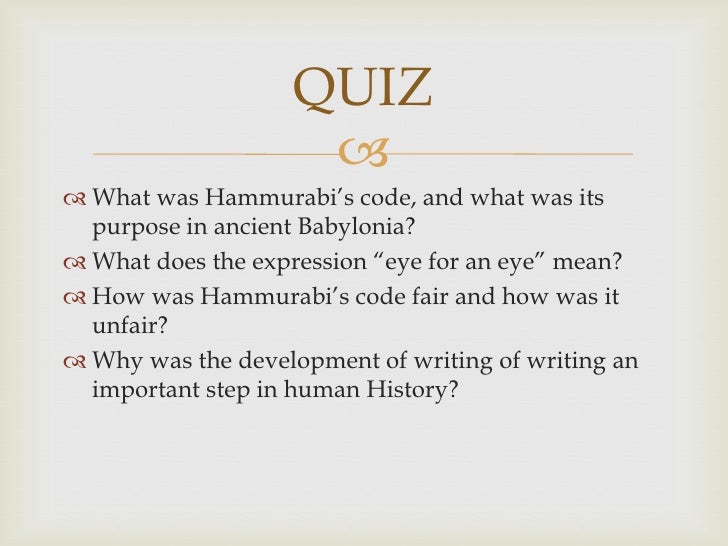An Eye For An Eye Hammurabi

Even there though the code shows complexity and sophistication.
An eye for an eye hammurabi. An example of that was if a poorly built house collapsed and killed its owner the builder would be put to death. This idiom originated in the ancient mesopotamian empire during hammurabi s rule in the 18th century bc. An eye for an eye 197. An eye for an eye is a paraphrase of hammurabi s code a collection of 282 laws inscribed on an upright stone pillar.
Hammurabi was the first king to have just laws his motto was an eye for an eye. Lex talionis 1 is the principle that a person who has injured another person is to be penalized to a similar degree by the injured party. Hammurabi is the best known and most celebrated of all mesopotamian kings. One law said if a man put out the eye of another man his eye shall be put out later historians summarized hammurabi s code with the phrase an eye for an eye a tooth for a tooth this means that whoever commits an injury should be punished in the same manner as that injury.
ע י ן ת ח ת ע י ן a or the law of retaliation latin. The full quotation from hammurabi s code reads if a man has destroyed the eye of a man of the gentleman class they shall destroy his eye. The bas relief of hammurabi at the united states congress. If he put out the eye of a freed man or break the bone of a freed man he shall pay one gold mina.
If a man destroys the eye of another man they shall destroy his eye. An eye for an eye is a paraphrase of hammurabi s code a collection of 282 laws inscribed on an upright stone pillar. The code was found by french archaeologists in 1901 while excavating the ancient city of susa which is in modern day iran. If he break another man s bone his bone shall be broken.
Another of the things that s noteworthy about the code is that it is the first known record putting forth the principle of an eye for eye which we later see in the bible. If a man put out the eye of another man his eye shall be put out. The code was found by french archaeologists in 1901 while excavating the ancient city of susa which is in modern day iran. No more and no less.
Expression supporting proportional punishment.


















